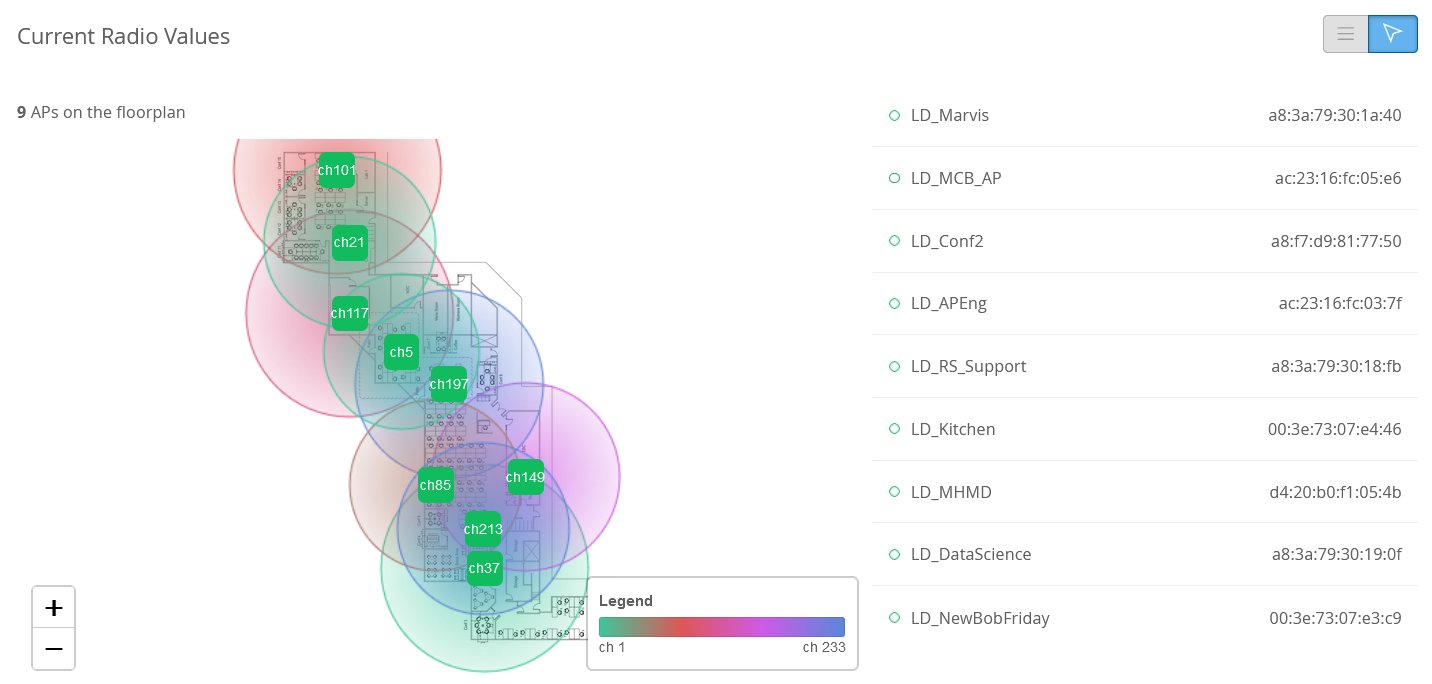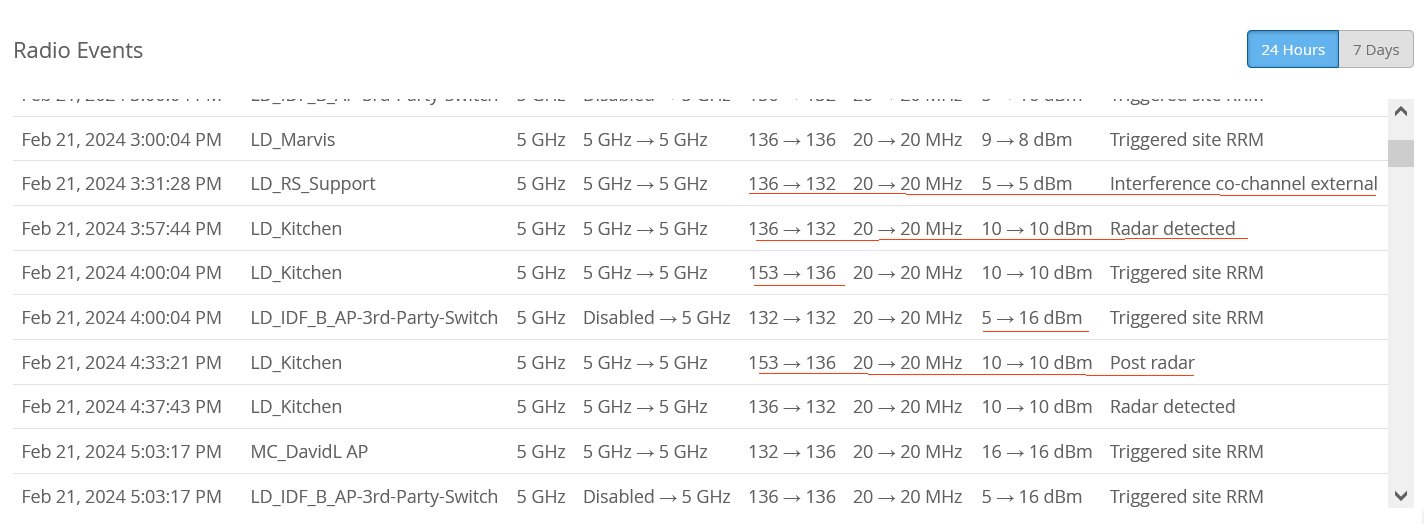Common Wi-Fi Issues
Learn more about Wi-Fi issues caused by interference, channel changes, and client load.
Interference
Interference can result in slower network speeds and client disconnections. This can be caused by various wireless signals and devices. For example, any Wi-Fi networks nearby, microwave ovens, or Bluetooth devices could disrupt or weaken your Wi-Fi signals. The most common types of interference are:
- Adjacent interference, which happens when APs use channels that are close to each other (for example, channels 1 and 2);
- Co-channel interference, which happens when two or more APs are using the same channel;
- Non-Wi-Fi interference, which can be caused by radar from motion detectors, Bluetooth devices, and microwave ovens.
You can view these by clicking Monitor > Service Levels | Insights in the main menu, selecting the time period and AP you want, and then scrolling down the page to Channels (see Figure 1).

You can check for co-channel and adjacent channel interference by clicking Site > Radio Management and then scrolling down to Current Radio Values (see Figure 2).

Channel Changes
Mist APs will automatically change channel whenever radar is detected on dynamic frequency selection (DFS) channels, or when the current channel encounters interference. During such times, the AP deauthenticates all associated clients and Wi-Fi connection will be briefly interrupted.
You can view these by clicking Site > Radio Management and then scrolling down to Radio Events (see Figure 3).

Client Load
Client Load and the type of clients can also cause certain issues while passing traffic. If the number of clients is high, the channel contention will also be high. This will affect traffic.
